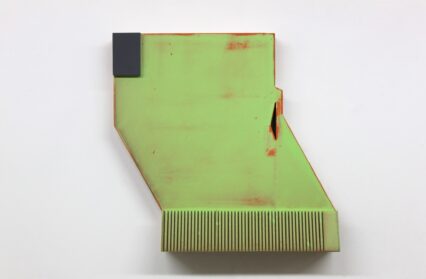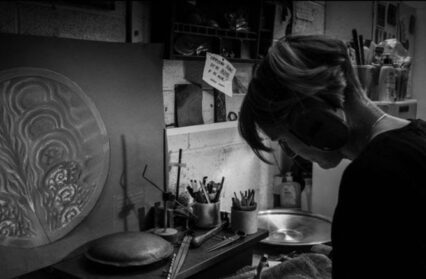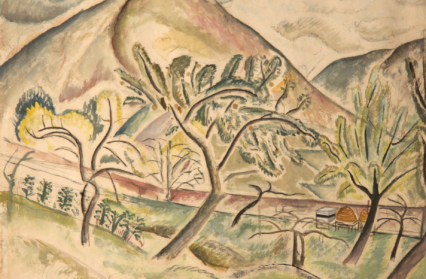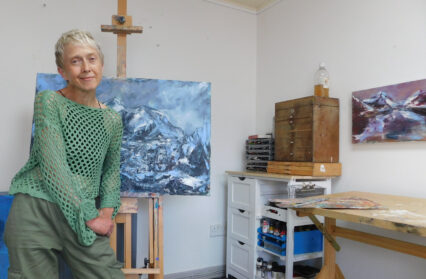This spring the BBC continues its centenary celebrations with an exhibition showcasing 100 years of broadcasting in Wales, at the National Museum of Wales. Gary Raymond went along to ponder what it all says about the BBC and to glimpse a childhood icon.
The marketing department for the National Museum of Wales, or whoever it is who’s responsible for selling the BBC 100 in Wales exhibition to the public, is missing a trick. Popular as this crash course in the history of the BBC in our country will surely be, none of the promotional materials betray the real treasures beyond the big glass doors of that big old building in Cardiff. Posting photos on my social media after walking round it a few weeks ago it was clear what sparked the passions of the idle, virtual passer-by. That the exhibition has on display the Bagpuss (or, at least, one of the soft toys used in the original Bagpuss series) caused something of a minor scramble. If the people behind this exhibition had simply put that pink and white face on the flyer, there would be queues around the block, night and day.
Bagpuss, at least in this context, ends up symbolising something about us, about the BBC, and about the relationship between the two. I am convinced – and this exhibition reminds me of this – that what the BBC does best is also the most important thing it does: children’s television. Perhaps the curators recognise this too, as they have filled the final act of this exhibition with achingly nostalgic nods to our childhoods with memorabilia from the classics of that unique sphere of public culture. But it also reminds us of how we were taught to think and empathise and laugh and love. (I wonder if the BBC ever reached the rec-rooms of England’s boarding schools?).
The BBC comes in for a lot of stick – we all know this; it is the BBC quite often that likes to bring it our attention. It takes its role as public servant very seriously. Self-flagellation is part of its modern DNA. Part of this exhibition even is given over to asking visitors to report back on post-it notes as to what they think the BBC could be doing better. There is no such thing at the BBC as a celebration without caveats. Are we too left? Are we too right? We don’t do enough on diversity. Not enough on LGBTQAI+ rights. An installation drawing attention to the fact historically BBC Wales has perhaps not spent enough time with its cameras poised on multicultural communities in Wales, symbolised here by Tiger Bay, has at its centre a blank TV screen. Powerful stuff, I thought, drawing attention to the blank screen that has so often been the reality of black and ethnic representation in Wales. Until I realised the TV had simply not been switched on, and it was supposed to be playing a short documentary about Bute Town on loop (by the time I passed it on the way out, this oversight had been remedied by a member of the museum staff).
This is by way of saying that the BBC has its critics, and those critics often have a point. But we lovers of the BBC are maybe its harshest if fairest ones. And we are harsh because of our love. The BBC is like family. And the exhibition recognises this too. It draws upon not just the history of the BBC in Wales, but also the part it has played in our lives. A recreation of a “typical” 1970s living room may, in the eyes of some cynics, suggest the curator is trying a bit too hard to hammer home a point, but those browns and yellows and oranges do some good work in tickling the nostalgia antennae. The BBC has been always with us. It is a society all of its own. And, I suppose, like all societies, the angriest people, who feel they have never been embraced, often could do with looking at themselves a bit before projecting onto an institution any reasonable person would believe was established for the greater good.
The history-lesson side of BBC 100 in Wales is less alluring than the simple mounting of evocative items. For the first furlong or so there’s a lot of information boards and it feels more like the news site of the BBC website, and I’m not sure if the stuffiness of this is offset or compounded by the amount of outdated equipment on show. These are curiosities to most, and fascinating to some. To many it will be junk. But it’s all a bit sixth form project. That’s not to say it’s not important. The journey of Wales making itself heard is a vital history lesson that colours much of what goes on now. And let us not forget the battle for Wales to be heard is far from won.
There is also quite a bit of stuff here – and I mean stuff – that we’ve all seen before. A TARDIS, a costume from His Dark Materials, scrubs from Casualty (could be just any scrubs, to be honest). Mentioning how the BBC has changed the ecology of production in Wales in the last few decades is an important part of this story – as important as any other, you could argue. But there is a lack of real energy here, and you can’t help but wonder if the whole thing isn’t lacking in a bit of dynamism. But maybe the whole of the BBC is feeling a bit bedraggled at the moment after Brexit and Saville and six thousand days of mourning for HRH. Thank God for the Six Nations, as they say. Maybe we’re due another five-hour documentary on that try against the All Blacks.
The BBC 100 in Wales exhibition runs at the National Museum of Wales until 16th April. Information available here.


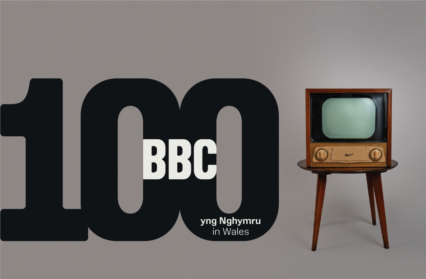
 Enjoyed this article? Support our writers directly by buying them a coffee and clicking this link.
Enjoyed this article? Support our writers directly by buying them a coffee and clicking this link.


